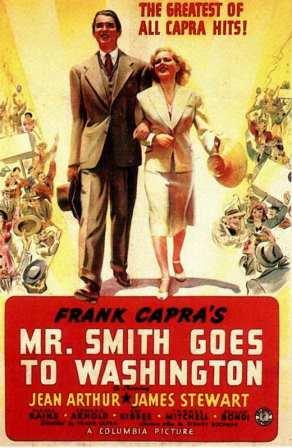An idealistic junior senator arrives in Washington, D.C., only to find corruption.
Like most movie years, 1939 is remembered for a number of milestones, good and bad. It was the last time the identity of the Oscar winners would be released to the press prior to the awards ceremony, since, that year, the Los Angeles Times published the winners in the evening edition. Thereafter the great secrets would be protected by Price Waterhouse, sealed in envelopes and locked in a briefcase, escorted by a man with the only key.
It was the first of the nineteen years that Bob Hope would host the ceremonies. It was the occasion of the first posthumous winner; Gone With the Wind screenwriter Sidney Howard had been killed in a tractor accident on his Massachusetts farm. Among the Oscar categories, 1939 introduced the new classification of Special Effects and the addition of Color as a second division, along with B&W, in the Cinematography category.
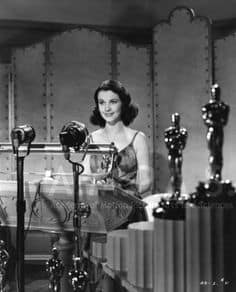 Most important of all, 1939 remains the unqualified greatest year for quality movies. Although then there were ten nominations for Best Picture—five would be the limit from 1945 until 2009—and though many subsequent years would be hard-pressed to nominate even that reduced number of deserving films, ten would just barely be adequate in 1939. The greatest of the ten, assuming greatness can be subdivided into levels, or that differing genres of film can be compared, would have to include Gone With the Wind, The Wizard of Oz, Goodbye, Mr. Chips and Stagecoach.
Most important of all, 1939 remains the unqualified greatest year for quality movies. Although then there were ten nominations for Best Picture—five would be the limit from 1945 until 2009—and though many subsequent years would be hard-pressed to nominate even that reduced number of deserving films, ten would just barely be adequate in 1939. The greatest of the ten, assuming greatness can be subdivided into levels, or that differing genres of film can be compared, would have to include Gone With the Wind, The Wizard of Oz, Goodbye, Mr. Chips and Stagecoach.
And also on that esteemed 1939 list of Best Films was Mr. Smith Goes to Washington. Its male star, James Stewart, had the kind of presence on screen that made women want to cuddle or perhaps even “mother” him, the “aw-shucks” boy next door. Among his fellow nominees in the Best Actor category, Clark Gable’s presence, quite differently, caused women, in the polite vernacular of the day, to “swoon” and do anything but “mother” him, the tall, dark stranger come to town.
The bets were that one of these would win. But the recipient came out of right field, a “field,” in fact, over 5,000 miles to the east—in England. Robert Donat in Goodbye, Mr. Chips, Hollywood-conceived but filmed at M-G-M’s British studios, plays the shy schoolmaster who inspires generations of young boys and whose life is transformed by a lively suffragette (Greer Garson).
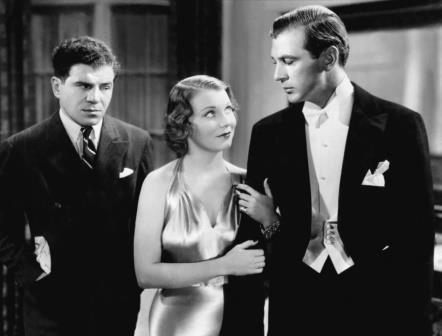 Mr. Smith Goes to Washington is one of director Frank Capra’s best, among the “top three” that also includes It Happened One Night (1934) and Mr. Deeds Goes to Town (1936). Deeds (Gary Cooper) is another naïve man, like Stewart’s character, who leaves a country town for the big city and finds people at their worst and, then later, others at their best. Stewart captures both the naïveté in the beginning—and, like Deeds, has an innocence around women—and the dramatic maturity in the end, having wised up and set out to set things right.
Mr. Smith Goes to Washington is one of director Frank Capra’s best, among the “top three” that also includes It Happened One Night (1934) and Mr. Deeds Goes to Town (1936). Deeds (Gary Cooper) is another naïve man, like Stewart’s character, who leaves a country town for the big city and finds people at their worst and, then later, others at their best. Stewart captures both the naïveté in the beginning—and, like Deeds, has an innocence around women—and the dramatic maturity in the end, having wised up and set out to set things right.
The supporting players, like so many of Capra’s previous movies, include some of the finest and most familiar character actors of the day—nay, of all time. Submerged uncredited in the large cast are Alec Craig, George Chandler and Olaf Hytten and those who would later become stars in varying degrees of success—Dorothy Comingore (the second wife in Citizen Kane [1941]), Jack Carson, Craig Stevens (TV’s famous Peter Gunn) and Robert Sterling.
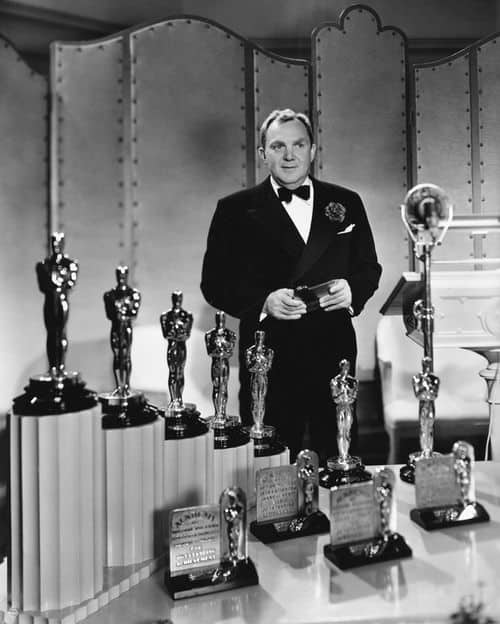 More important were the supporting players who were credited. Edward Arnold, introduced to Capra’s world the year before in You Can’t Take It With You, would now become the director’s most ruthless villain. By contrast, Thomas Mitchell, cast as a good guy, had appeared inGWTW as Gerald O’Hara, for which he was not nominated, but would win Best Supporting Actor as a drunken passenger in yet a third film,Stagecoach.
More important were the supporting players who were credited. Edward Arnold, introduced to Capra’s world the year before in You Can’t Take It With You, would now become the director’s most ruthless villain. By contrast, Thomas Mitchell, cast as a good guy, had appeared inGWTW as Gerald O’Hara, for which he was not nominated, but would win Best Supporting Actor as a drunken passenger in yet a third film,Stagecoach.
Silent screen star H.B. Warner, who had served Capra as a judge, an oriental, a housing developer and in 1946 would be a pharmacist, now becomes the senate major leader in Mr. Smith. Harry Carey, Guy Kibbee, Beulah Bondi, William Demarest, Charles Lane, Eugene Pallette, Ruth Donnelly, Grant Mitchell and Porter Hall serve as either Capra regulars or first-timers.
The cast set and ready, the story begins. . . .
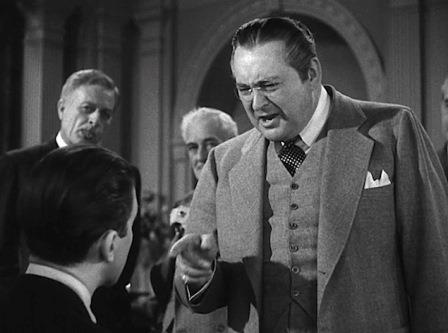 As the death of a rich relative begins Mr. Deeds Goes to Town, so a death in Mr. Smith prompts a corrupt political boss, Jim Taylor (Arnold), to force a like-thinking governor, Hubert “Happy” Hopper (Kibbee), to replace a recently deceased U.S. Senator with a thought-to-be country bumpkin. Seemingly naïve and head of the Boy Rangers, Jefferson Smith (Stewart) seems a most likely choice. (With a similarly famous American name, Deeds’ is Longfellow.)
As the death of a rich relative begins Mr. Deeds Goes to Town, so a death in Mr. Smith prompts a corrupt political boss, Jim Taylor (Arnold), to force a like-thinking governor, Hubert “Happy” Hopper (Kibbee), to replace a recently deceased U.S. Senator with a thought-to-be country bumpkin. Seemingly naïve and head of the Boy Rangers, Jefferson Smith (Stewart) seems a most likely choice. (With a similarly famous American name, Deeds’ is Longfellow.)
As did Deeds, Smith arrives by train, not in New York City, but in Washington, D.C. Both men take bus tours of their cities, Smith ending at the Lincoln Memorial. He also is impressed and inspired by the sights as Deeds is with Grant’s Tomb. Like Deeds, Smith perhaps goes a bit overboard in expressions of patriotic zeal.
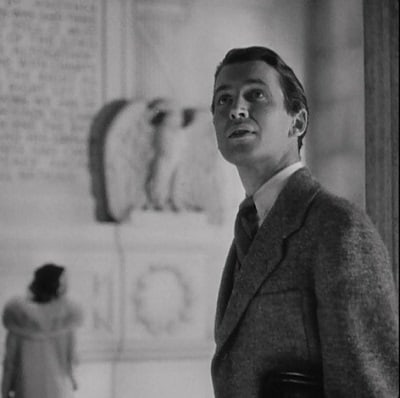 Mr. Smith is, after all, Capra’s most sentimental, flag-waving film. The accompanying jabs at the senate, anti-government innuendos and the film’s general political viewpoints caused something of a controversy at the time, even prompting the U.S.’s renegade ambassador to the U.K., Joseph P. Kennedy, to warn that the film could cause “inestimable harm to American prestige” if shown overseas—it didn’t.
Mr. Smith is, after all, Capra’s most sentimental, flag-waving film. The accompanying jabs at the senate, anti-government innuendos and the film’s general political viewpoints caused something of a controversy at the time, even prompting the U.S.’s renegade ambassador to the U.K., Joseph P. Kennedy, to warn that the film could cause “inestimable harm to American prestige” if shown overseas—it didn’t.
A friend of Smith’s late father, Joseph Paine (Claude Rains), an outwardly distinguished senior senator but also corrupt, in league with Taylor over a dam-building graft scheme, introduces Smith to his daughter, Susan (Astrid Allwyn). The junior senator immediately develops an awkward attraction, fumbling with his hat, nervously rotating it by its brim and dropping it several times. Finally, he stumbles over a chair.
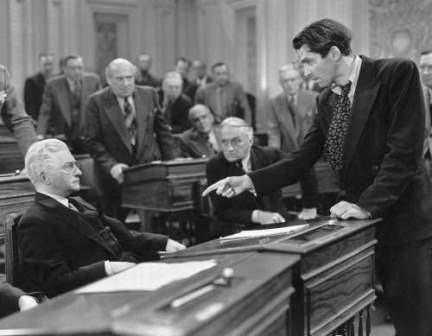 Smith’s bird calls and simulations of native Indian poses for the reporters greatly please Hopper and Taylor, reassured that, indeed, their innocent fledgling is the perfect dupe for their crooked ends. Smith slugs a reporter when newspaper headlines suggest he is nothing more than a stooge and a mere “government appointment.”
Smith’s bird calls and simulations of native Indian poses for the reporters greatly please Hopper and Taylor, reassured that, indeed, their innocent fledgling is the perfect dupe for their crooked ends. Smith slugs a reporter when newspaper headlines suggest he is nothing more than a stooge and a mere “government appointment.”
Feeling that Smith is attracting too much negative attention, Paine suggests Smith propose a bill to start a national boys’ camp. He even has his secretary, Clarissa Saunders (Jean Arthur), assist him. While she gives him background on how a bill is created and passed through Congress, he lectures her on patriotism, freedom and what America is all about. Clarissa tears up, moved by his fervor, but sensing, too, his perhaps defenseless naïveté against the Washington bureaucracy.
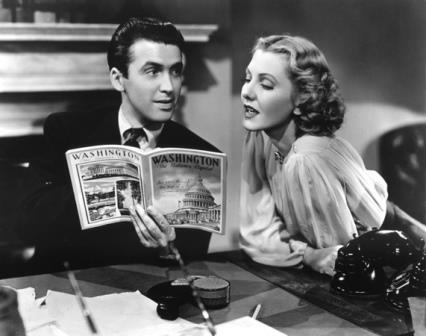 Just coincidentally, the land Smith proposes in his bill for the boys’ camp is part of the appropriations bill of Taylor, Paine, Hopper and “associates.” The Taylor machine in Smith’s state suggests, that since Smith already owns the land, he plans to profit from the bill. Disillusioned to discover that Paine is corrupt and has betrayed him, Smith intends to leave town, stopping at the Lincoln Memorial to seek solace. Clarissa finds him there and encourages him to return to the Senate and fight for his beliefs.
Just coincidentally, the land Smith proposes in his bill for the boys’ camp is part of the appropriations bill of Taylor, Paine, Hopper and “associates.” The Taylor machine in Smith’s state suggests, that since Smith already owns the land, he plans to profit from the bill. Disillusioned to discover that Paine is corrupt and has betrayed him, Smith intends to leave town, stopping at the Lincoln Memorial to seek solace. Clarissa finds him there and encourages him to return to the Senate and fight for his beliefs.
As Babe Bennett (Arthur) in Mr. Deeds comes to Deeds’ defense in the climactic courtroom scene, Clarissa suggests Smith instigate a filibuster on the Senate floor to postpone the Taylor bill long enough to prove his innocence before that body can vote his dismissal. He speaks, non-stop, for twenty-four hours, recounting the Taylor machine’s corruption, reading from the Constitution and I Corinthians, all the while fighting for the ideals of freedom:
“You all think I’m licked,” he says toward the end. “Well, I’m not licked. And I’m gonna stay right here and fight for this lost cause. Even if this room gets filled with lies like these and the Taylors and all their armies come marching into this place. Somebody will listen to me.”
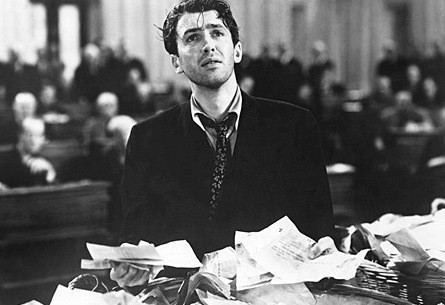 Surely, with the humor, the eventual hoarse voice and, later, the staggering fatigue and collapse, it’s one of James Stewart’s finest moments and clearly the core of his Oscar nomination. At one point, noticing members of the chamber have turned their backs to him, Smith whistles, and, startled, the senators turn to look at him. “That’s all right,” he says. “I just wanted to find out if you still had faces.”
Surely, with the humor, the eventual hoarse voice and, later, the staggering fatigue and collapse, it’s one of James Stewart’s finest moments and clearly the core of his Oscar nomination. At one point, noticing members of the chamber have turned their backs to him, Smith whistles, and, startled, the senators turn to look at him. “That’s all right,” he says. “I just wanted to find out if you still had faces.”
While Smith speaks, Taylor calls forth the national, Taylor-controlled newspapers to slander Smith. Clarissa calls Smith’s hometown to have boys print papers defining the truth, and Taylor instructs his hoodlums to sabotage the boys, running them off the roads as they deliver the papers on their bicycles, killing some.
Finally, it’s too much for Paine, and after dashing from the chamber and attempting to shoot himself, he returns, declaring in a rage that he’s unfit to serve in the Congress, that Smith’s accusations are all true.
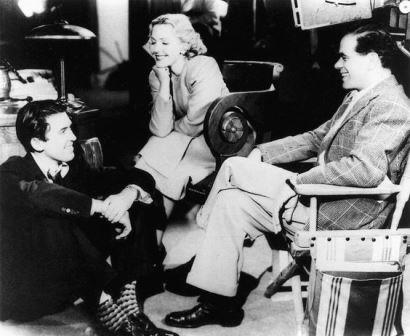 The spectators in the balconies erupt in cheers. The President of the Senate (Carey), who had encouraged Smith during his filibuster with friendly smiles of encouragement (Carey would receive a Best Supporting Actor nomination, as would Rains), tries to restore order, but, unsuccessful, he sits back and enjoys the mayhem. The little Senate page boy (Dick Jones) signals to Clarissa from the floor that Smith merely fainted, and she and friend “Diz” Moore (Mitchell) embrace each other.
The spectators in the balconies erupt in cheers. The President of the Senate (Carey), who had encouraged Smith during his filibuster with friendly smiles of encouragement (Carey would receive a Best Supporting Actor nomination, as would Rains), tries to restore order, but, unsuccessful, he sits back and enjoys the mayhem. The little Senate page boy (Dick Jones) signals to Clarissa from the floor that Smith merely fainted, and she and friend “Diz” Moore (Mitchell) embrace each other.
While director Frank Capra had two of his favorite stars, Stewart and Arthur, and two other regulars, cinematographer Joseph Walker and composer Dimitri Tiomkin, the third, Robert Riskin, screenwriter for most of his best and most successful films, was replaced this time around by Sidney Buchman. It doesn’t seem to matter: Buchman assimilates the Capra style, understanding the director’s demanding script requirements. The film retains the Capra flair (that blend of drama/humor/pathos); presents, if perhaps in great gushes, the typical Capra message (political and now with the barbs); and reinforces that hope in humanity, that, in the worst of times, the best of human nature will triumph.
And, yes, sometimes it does, if more often in the movies than in real life.
